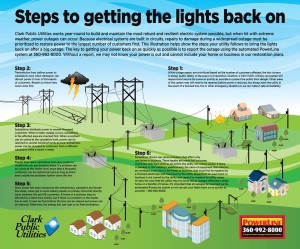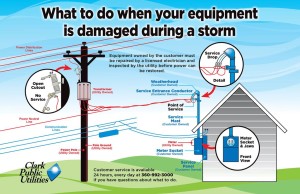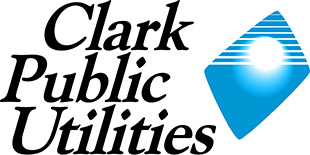 During power outages, many problems may prevent power from reaching customers, especially during storms. Here’s how we prioritize our repairs during an outage:
During power outages, many problems may prevent power from reaching customers, especially during storms. Here’s how we prioritize our repairs during an outage:
1) Hazardous situations threatening public safety
2) Transmission lines, which deliver power to substations
3) Substations that distribute power to several thousand customers
4) Feeder lines from substations which affect large numbers of customers
5) Primary lines which serve between five and 30 customers
6) Outages affecting individual customers
Click on the image to the right to see a larger version.
Why We Check the Whole System
In an electric system, high voltage power travels from a source, such as a Columbia River dam, over a regional transmission system to utility substations. From there it runs through a series of feeder lines that connect with primary lines serving individual customers. Transformers along the way lower the voltage for safe use in our homes and businesses.
Problems can occur at any stage of transmission. If there is damage to both the substation and primary line delivering power to your home, fixing the primary line first won’t do any good, because damage at the higher level will prevent power from reaching your neighborhood. That’s why we start at the top of the system and work our way down.
Frequently Asked Outage Questions
Why do I have trouble getting a call through to your office during an outage?
You may be calling our regular 360-992-3000 number, which can’t handle the high call volume we receive during an outage, Call our PowerLine at 360-992-8000 to report outages and get updated outage information. PowerLine takes up to 1,200 calls a minute, so you’re unlikely to ever get a busy signal!
Why can’t you tell me when my power will be restored?
Unless the cause of an outage is obvious (example: when a car runs into a power pole), we don’t know how long it will take to learn the source and extent of the damage. During winter storms that result in numerous outages, it’s even harder to estimate damage and repair time, and we don’t want to give you false expectations.
 My neighbors have power—why don’t I?
My neighbors have power—why don’t I?
There may be a blown fuse in a transformer or damage to the line serving your home. We may also need to isolate a small section of line to work on a problem, even while power is restored to other parts of the same line.
The diagram on the right shows which equipment belongs to the utility and which is the customer’s responsibility.
Click on the image to see a larger version.
Do certain customers get their power restored first after an outage?
No. We start with the biggest problems and work our way down. However, we do make special efforts to respond quickly to the needs of emergency service providers, such as police, fire stations and hospitals.
Why does it take so many hours, sometimes days, to get power back?
During major outages that affect many areas of the county, we have to resolve all the problems methodically and safely. The time it takes to repair problems is directly related to the extent of the damage.

